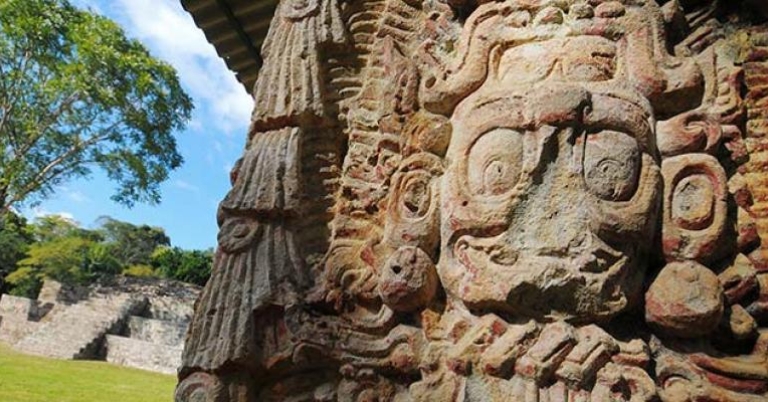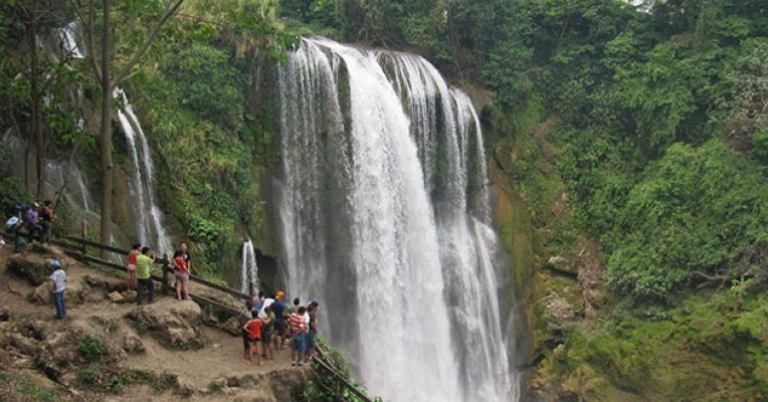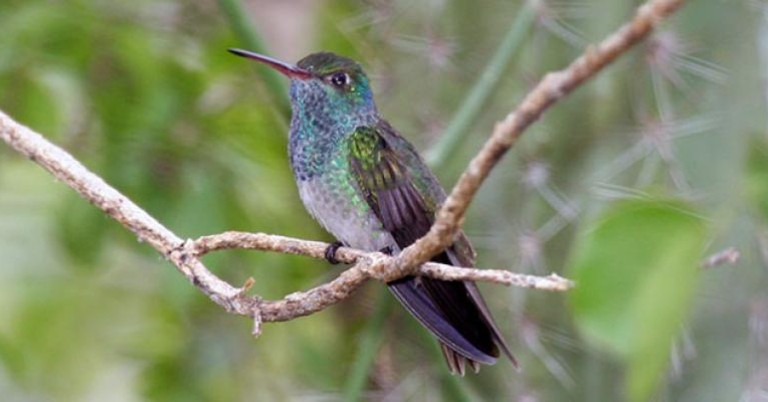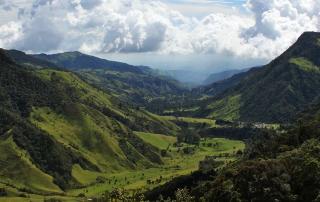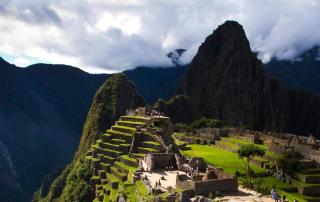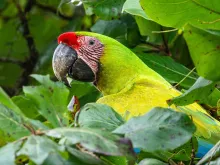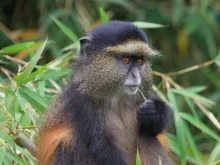This country is bursting with dynamic and unforgettable sights and culture. The mountainous nation of Honduras runs the width of Central America, from the Pacific Ocean to the Caribbean. The country is neighbored by Belize, Guatemala, Nicaragua and El Salvador. Many years ago, the southern range of the Mayan civilization extended into what is now Honduras. One of the icons of Mayan archaeology, Copán, is in the country’s western edge near the border with Guatemala. Seven recognized indigenous groups still reside in Honduras, including the Miskito Indians, the Pech, and the Garifuna.
This beautiful country contains vast biological resources including more than 600 species of orchids, about 700 bird species, and more than 100 mammal species. Bottlenose dolphins, manta rays, parrotfish and whale sharks inhabit the waters surrounding the Bay Islands. Some birds you may stumble across in Honduras include White-breasted Hawk, Keel-billed Motmot, and Blue-tailed Hummingbird. The country is also home to rainforest, amazing coral reef, and lowland forest.
Honduras is making impressive conservation efforts, and travel has never been better in this spectacular country than it is now. Holbrook has been working in Honduras for decades, building long-term relationships that have the feel of an extended family. Whether visiting on a birding tour, conducting marine science on the Bay Islands, joining an archaeological program or visiting the country’s highlights with family, we can create a trip that translates into memorable and insightful experiences.
History & Culture
Situated in western Honduras in a small valley surrounded by mountains and tropical vegetation, the Maya archaeological site of Copán has some of the best preserved stelae, altars, and ceremonial areas in Honduras. Though Copán has none of the towering pyramids and temples that are characteristic of other Mayan cities, it is distinguished by its intricate carvings, inscriptions, and paintings, as well as a magnificently carved Hieroglyphic Stairway, which records the history of 17 rulers. Within Copán’s 74,000-acre archaeological park, observe the Great Plaza, the ball court, several lesser courts, and amphitheater that are symbolic of the boundaries between the actual and supernatural worlds. Less than two miles from the main Copán complex is the small archaeological site of Las Sepulturas, where the Copán aristocracy lived. Learn about the work of numerous archaeologists who are working to enhance the restoration of the ruins and learn more about the Maya through the many inscriptions they left behind.
In present-day Honduras, seven recognized indigenous groups still reside, including the Miskito Indians, the Pech and the Garifuna. The Garifuna are descendants of West African, Central African, Island Carib, and Arawak people, and in 2001, UNESCO proclaimed the language, dance and music of the Garifuna as a Masterpiece of the Oral and Intangible Heritage of Humanity. Visit an authentic Garifuna village to experience Garifuna culture firsthand.
Marine Life
Honduras’ Bay Islands, once favored by pirates and later controlled by the British, are now a top destination for divers and beachgoers. The islands, which include Roatán and Útila, offer unparalleled opportunities for both serious marine study and more leisurely beach relaxation.
Forty miles long and two miles wide, Roatán is the largest of the Bay Islands. It has a mountainous backbone and is surrounded by coral reef. Beaches and cliffs surround the north shore of the island, with deep water off the coast that is protected by reefs. Along the south shore, coral formations are often just steps off the beach. Together with its neighbor, the smaller Útila, it boasts some of the best snorkeling and diving in the hemisphere. Go snorkeling to explore over 100 species of coral teeming with everything from morays, octopus, and turtles, to drums, wrasse, gobies, ocean triggers, schools of blue tangs, and perhaps even wild dolphins and whale sharks. The water is warm, visibility is high, and you can expect calm seas when you embark on your snorkeling excursion. To learn more about whale sharks, visit the Whale Shark and Oceanic Research Center (W.S.O.R.C.) and attend a session on whale shark biology, methods of tagging, tracking, genetic sampling theory, and how the samples are processed. Learn about their current operations, activities, and the role of furthering education, information, and research in the worldwide arena, and then head out for a non-invasive whale shark snorkel encounter.
Flora & Fauna
This beautiful country contains vast biological resources in its many reserves, gardens, national parks, and private lands. The country is home to coral reef, rainforest, and lowland forest; about 65 percent of Honduras still maintains forest cover. Humid tropical forest, deciduous tropical forest, highland pine forests, cloud forest, grassland savannah, limestone mountains, and mangrove wetland habitats can all be found here, and protected areas like Parque Nacional Cerro Azul/Meámbar (PANACAM), Lake Yojoa, and Pico Bonito National Park provide much-needed habitat to a host of species. Throughout recent history much of the Honduran mammals, from jaguars to deer to wild boar, have been hunted out. However, because of the country’s rugged topography, a number of isolated regions remain, providing refuge for species that have become extinct elsewhere. In the cloud and rainforests, primates like howler monkeys and capuchins are easy to spot. Several species of wild cats, including jaguars, mountain lions, ocelots, margays and jaguarundis, can also be seen. Other forest mammals include the two- and three-toed sloths, anteaters, white-nosed coatis, kinkajous, peccaries, agoutis, and vampire bats.
Birds
For a country its size, Honduras has a wild profusion of bird life with more than 710 species identified. A prime birding location is at Lago de Yojoa, the country’s largest inland lake, as well as at many cloud forest reserves like La Muralla, Cusuco, Celaque and others. La Muralla is particularly well-known for sightings of the beautiful Resplendent Quetzal. The coastal regions have unique sets of water birds including pelicans, frigatebirds, sandpipers, ibis, ducks, storks, fishing eagles, and herons. Copán is also an important migration bird pathway, and there are a large number of resident birds as well, such as Blue-crowned Motmots, Turquoise-browed Motmots, and Barred Antshrike.
Entry & Exit Requirements
U.S. and Canadian citizens must have a valid passport to enter Honduras. Passports must be valid for at least six months after the date of entry.
A visa is not required for visits up to 30 days.
If you are not traveling with a U.S. passport, please be sure to check with the Honduran Embassy for requirements based on your nationality.
There is a departure tax of approximately $40; if you purchased your flights through Holbrook Travel, this tax is included in the cost of your airline ticket. If you purchased your flights independently, please check with your airline to determine whether departure tax is included.
Health Information
IMMUNIZATIONS
The Centers for Disease Control recommends that all travelers be up to date on routine vaccinations such as measles-mumps-rubella (MMR) vaccine, diphtheria-pertussis-tetanus vaccine, varicella (chicken pox) vaccine, and your yearly flu shot before every trip.
There are no vaccinations required for entry into Honduras, unless you are traveling from an endemic yellow fever area within six weeks prior to entry.
Some physicians recommend that travelers get hepatitis A and typhoid vaccines before visiting Honduras.
Please consult your physician for additional information and recommendations based on your individual circumstances.
MALARIA
The CDC warns that travelers to Central America may be at risk for exposure to malaria. Malaria is caused by a parasite found in Anopheles mosquitos, which are active from dusk until dawn. Prevention is twofold: the use of anti-malarial drugs and the prevention of insect bites. If you choose to use an anti-malarial drug, as recommended by the CDC, see your physician for a prescription.
CHIKUNGUNYA
Locally transmitted cases of chikungunya have been reported in Central America. Local transmission means that mosquitoes in the area have been infected with chikungunya and are spreading it to people. The CDC recommends that travelers to Central America protect themselves from mosquito bites.
ZIKA VIRUS
Locally transmitted cases of Zika virus have been reported in Honduras. Local transmission means that mosquitoes in the area have been infected with Zika and are spreading it to people. The CDC recommends that travelers to Honduras protect themselves from mosquito bites. As a precaution, the CDC advises women who are pregnant to consider postponing travel to any area where Zika virus transmission is ongoing.
SUN EXPOSURE
The effects of the sun can be damaging to the eyes and skin. Spending time outdoors exposes you to the sun’s harmful ultraviolet (UV) rays, even on cloudy days. To protect yourself from the sun, use a broad spectrum sunscreen of at least SPF 15, protect skin with clothing, wear a wide-brimmed hat and sunglasses, and drink plenty of fluids.
Currency
The currency of Honduras is the Lempira, named for the Maya chief who resisted Spanish subjection. The bills include ones, twos, fives, tens, twenties, fifties, and one hundred Lempiras. Coins are minted into one, two, five, ten, twenty, and fifty centavos.
Electricity
The electrical current in Honduras is usually 110V 60Hz AC, the same as in the United States, but 220V current is used in some locations.
Time Zone
The time zone in Honduras is the same as U.S. Central Standard Time (UTC-06:00).
Honduras does not observe Daylight Saving Time.
Departures and arrivals on flight schedules are always listed in the local time.
Communications
PHONES
The country code for Honduras is +504.
To call Honduras (from the U.S.): Dial 011-504-(xx-xxx-xxxx)
To call the United States: Dial 001-(xxx-xxx-xxxx)
Check with your cell phone provider to determine whether your cell phone will work internationally. Be aware that you are likely to incur additional charges for international use. Another option is purchasing a cell phone from a Honduran provider that uses a pre-paid service.
INTERNET
Many hotels offer WiFi, and in larger cities Internet cafes and free wireless hotspots are becoming increasingly common.
Reading List
FIELD GUIDES
Animals and Plants of the Ancient Maya, A Guide
Victoria Schlesinger
A comprehensive guide to the natural and cultural history of 100 plants and animals of the Maya world, primarily those from the lowland tropical forest of Central America but also including savannah, mangrove, and coral reef habitats.
A Guide to the Birds of Mexico and Northern Central America
Stephen Howell & Sophie Webb
Serious birders will want this definitive guide to the 1,070 bird species of Mexico, Guatemala, Belize, Honduras and western Nicaragua.
Snorkeling Guide to Marine Life
Paul Humann
Humann’s compact guide illustrated Caribbean fishes, corals, invertebrates, and plants commonly encountered in shallower water.
GUIDEBOOKS
Moon Handbook Honduras
Chris Humphrey
A comprehensive guide to Honduras and its history, culture, and attractions.
MAPS
Honduras Map
ITMB
A travel map of Honduras at a scale of 1:500,000 with good topographic relief.
NATURAL HISTORY
High Jungles and Low
Archie Carr
In this absorbing memoir, Carr tells of life in the Honduran highlands. His account of slogging through the forest on a commercial expedition in search of mahogany is classic. Though it takes place in Honduras, it’s just as appropriate for a trip to any Central American jungle.
Tropical Nature
Adrian Forsyth & Ken Miyata
A lively, lucid portrait of the rain forest as seen by two uncommonly observant and thoughtful field biologists. Its 17 marvelous essays introduce the habitats, ecology, plants and animals of the Central and South American rain forest.
A Neotropical Companion
J.C. Kricher
A tropical primer aimed at the motivated general reader. It’s a systematic overview of the ecology, habitats, animals, plants and ecosystems of Central and South America.
HISTORY & CULTURE
Lost Cities of the Maya
Claude Baudez & Sydney Picasso
A pocket guide to Maya archaeology. This lavishly illustrated small book features hundreds of color photographs and illustrations – along with excerpts from key works and a brief guide to Maya arithmetic, their calendar, and inscriptions.
Scribes, Warriors and Kings: The City of Copan and the Ancient Maya
William L Fash
A revised edition of the comprehensive, illustrated overview of the great city of Copan, its rise to power, history and mysterious collapse in the ninth century.
Incidents of Travel in Central America, Chiapas and Yucatan
John Lloyd Stephens
Stephen’s 1843 account, an instant best seller and still an excellent introduction to the region. This first volume includes several chapters on Copan and a riveting account of arrival in Guatemala during civil unrest.
The Maya
Michael Coe
A clear, concise and up-to-date introduction to Maya archaeology and culture by a leading authority.
Maya Art and Architecture
Mary Ellen Miller
Organized thematically, this book surveys the art and architecture throughout Mayadom. Miller presents the range of Mayan art, from architecture to sculpture, ceramics, and murals.
Reading the Maya Glyphs
Mark Van Stone & Michael Coe
A compact, illustrated guide to commonly encountered Maya hieroglyphics. With clear drawings by the calligrapher Mark Van Stone and illuminating text by Mayanist Michael Coe.
The World of the Ancient Maya
George S. Henderson
A survey of the Maya from early settlement to the Spanish invasion. With descriptions of Maya architecture, art, language, and daily life, photos, and maps.
An Album of Maya Architecture
Tatiana Proskouriakoff
Combining talents as scholar, artist and architect, Proskouriakoff presents breathtaking artistic reconstructions of what the Maya sites may have looked like 1,000 years ago.
Popol Vuh, The Mayan Book of the Dawn of Life
Dennis Tedlock
A collection of creation myths and stories of the Quiche people, fundamental to understanding the world view of the highland Maya.
A Forest of Kings, The Untold Story of the Ancient Maya
Linda Schele & David Freidel (Contributor)
Renowned Maya archaeologists Linda Schele and David Freidel tell the history of the Maya, as it was recorded in the previously undecipherable hieroglyphics of the Maya.
